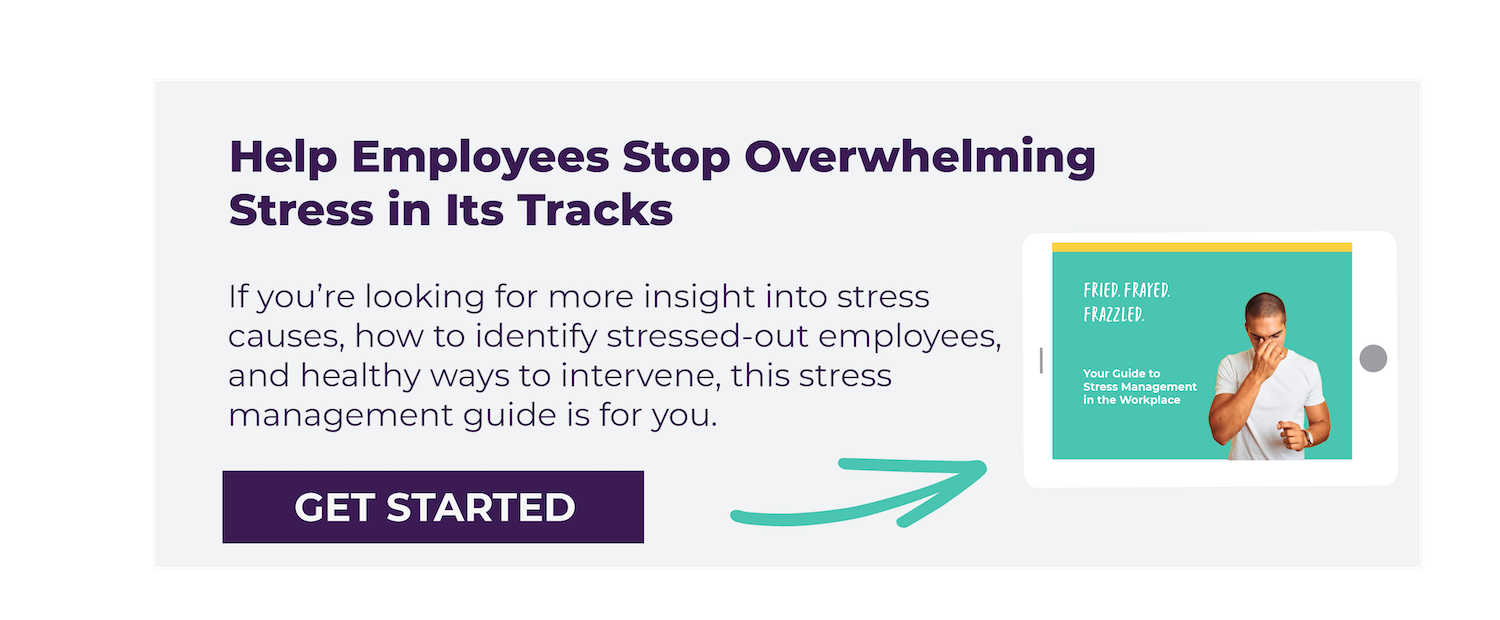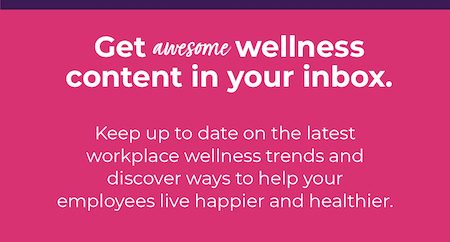
TL;DR: Stress is part of work life, but relief can be simple. This article shares 10 quick, calming habits that feel like a warm hug, from deep breathing to mindful breaks and short walks. Small pauses, done often, help employees reset, recharge, and show up as their best selves.
If stress had a soundtrack, most workplaces would be stuck on a loop of buzzing phones, endless pings, and back-to-back meetings.
No surprise then: according to APA’s 2023 Work in America™ Survey, a whopping 77% of workers said they felt work-related stress in just the past month.
And stress doesn’t just hang out in people’s heads. It leaks into burnout, turnover, and checked-out employees. It even comes with a jaw-dropping price tag — costing U.S. companies up to $300 billion a year in lost productivity and healthcare. That’s a lot of drained energy and missed potential.
But here’s the twist: the antidote doesn’t have to be big or complicated. Sometimes the tiniest pauses can pack the biggest punch. Think of them like mini resets for the nervous system. Simple moments that leave people feeling calmer, clearer, and more supported.
In this article, you’ll discover 10 quick stress-busters your employees can use right away. Share them in a newsletter, kick off a meeting with one, or lead by example. Sometimes just a few minutes of calm is all it takes to change the whole day.
Why Burnout Matters at Work
Stress isn’t just a temporary feeling. When it becomes chronic, it escalates into burnout — a state of physical, emotional, and mental exhaustion that directly affects both people and organizations.
Here’s what burnout looks like in the workplace:
-
Lower engagement – Burned-out employees lose motivation and stop contributing at their best.
-
Increased turnover – Research from Gallup shows employees experiencing burnout are 2.6 times more likely to leave their job.
-
More absenteeism – Stress-related health issues often lead to sick days or presenteeism (being at work but not productive).
-
Higher healthcare costs – Chronic stress is linked to serious conditions like heart disease, depression, and sleep disorders.
Think of burnout as a flashing yellow light: it’s a signal to slow down and pay attention. If ignored, it drains both people and performance.
10 Soothing Activities to Reduce Stress Fast
These activites are designed to calm the nervous system, restore perspective, and remind employees they’re not alone. Encourage your teams to try one or two when they’re feeling drained.
1. Write Down Three Good Things
Even on tough days, jotting down three small wins helps your brain focus on what’s working. This practice rewires your mindset toward gratitude and positivity.
2. Set a Timer for 10 Minutes and Do Absolutely Nothing
Rest is not wasted time. Encourage employees to pause. No phone, no planning, no multitasking. A mini reset calms the nervous system and improves focus afterward.
3. Drink Something Warm
Mindful sipping of tea or coffee while sitting down signals safety to the brain. The warmth plus stillness provides instant comfort.
4. Call or Text Someone Who Cares
Connection is medicine for stress. A quick check-in with a supportive friend or colleague reminds employees they are not alone.
5. Hands on Heart + Three Deep Breaths
This simple exercise activates the vagus nerve, which helps regulate stress. It’s fast, discreet, and powerful.
6. Write Down Worries, Then Close the Notebook
Externalizing worries stops the brain from cycling them on repeat. Just the act of writing can feel like lifting a weight off the mind.
7. Step Outside for 5 Minutes (withour your phone)
Fresh air, natural light, and a break from screens help reset mood and restore focus. Even short outdoor breaks improve wellbeing.
8. Say Out Loud: “I’m Struggling Today”
When employees normalize asking for support, anxiety loses its grip. Encourage teams to model honesty instead of pretending everything’s fine.
9. Press Palms Together + Breathe
A small grounding technique employees can use anywhere — from their desk to a conference room. It instantly cues the body to relax.
10. Give Yourself a 30-Second Hug
Self-hugs may sound simple, but they release oxytocin, the “bonding hormone.” This creates the physical comfort the body craves during stress.
How Leaders Can Support Stress-Relief Habits
Stress doesn’t have to snowball into full burnout. With practical tools, open communication, and supportive policies, organizations can step in early and make a real difference. When leaders embrace a human-centered approach — rooted in clear purpose, shared values, and spaces that welcome honest conversations — teams feel safe, connected, and motivated.
Here are a few simple ways leaders can support stress-relief at work:
Normalize micro-breaks.
Employees often feel guilty stepping away from their desks, even for a few minutes. HR can help by framing short breaks as a productivity strategy, not a luxury. Research shows that micro-breaks (5 – 10 minutes) reduce fatigue, boost focus, and support mental wellbeing. Consider adding “take five” language into employee communications and team meetings to make it part of the culture.
Model the behavior.
Employees look to managers for cues. When leaders take a quick walk, step away for a cup of tea, or pause for a mindful minute during meetings, it signals that these behaviors are accepted, and even encouraged. This is especially powerful in hybrid or remote settings where employees may otherwise feel pressure to always “be online.”
Offer wellness nudges.
Gentle reminders go a long way in helping employees form healthy habits. HR can use Slack, Teams, or email campaigns to share reminders like “stand and stretch,” “hydration break,” or “10 minutes of deep focus.” Posters in breakrooms or digital signage can also reinforce the message. The key is to keep nudges positive.
Create calm spaces.
A small, dedicated space with soft lighting, comfortable seating, and minimal noise gives employees a chance to recharge. This doesn’t have to be elaborate. Sometimes a quiet conference room or a corner with noise-canceling headphones work perfectly. These spaces show employees that their mental reset matters.
Celebrate small wins.
Highlighting success stories builds momentum. For example, share in a company newsletter how one team used mindful breaks to reduce stress during a busy season, or spotlight an employee who uses the calm room daily to reset. These stories normalize wellness practices and encourage others to try them. Pairing recognition with rewards (like wellness points, shout-outs in team meetings, or small perks) can amplify the impact.
Turning Small Resets Into Big Results
Stress will always be part of work but how we respond to it makes all the difference. The truth is, employees don’t need another complex program or big wellness initiative to feel supported. What they need are small, repeatable actions that bring calm back into their day.
For HR and wellness managers, the takeaway is clear: empower your employees with small, stress-relief habits and lead by example. You might start a meeting with a breathing exercise, organize a short weekly meditation, or create cozy break spaces where people can recharge. Let your team know it’s not just okay to take these micro-breaks. It’s encouraged. When employees see that it’s okay to pause, breathe, and reset, they’re more likely to do the same. And over time, those moments add up to something bigger: a healthier, steadier, more engaged workforce.
Because sometimes, all it takes is a few minutes — and a practice that feels like a warm hug — to change the course of the day.



